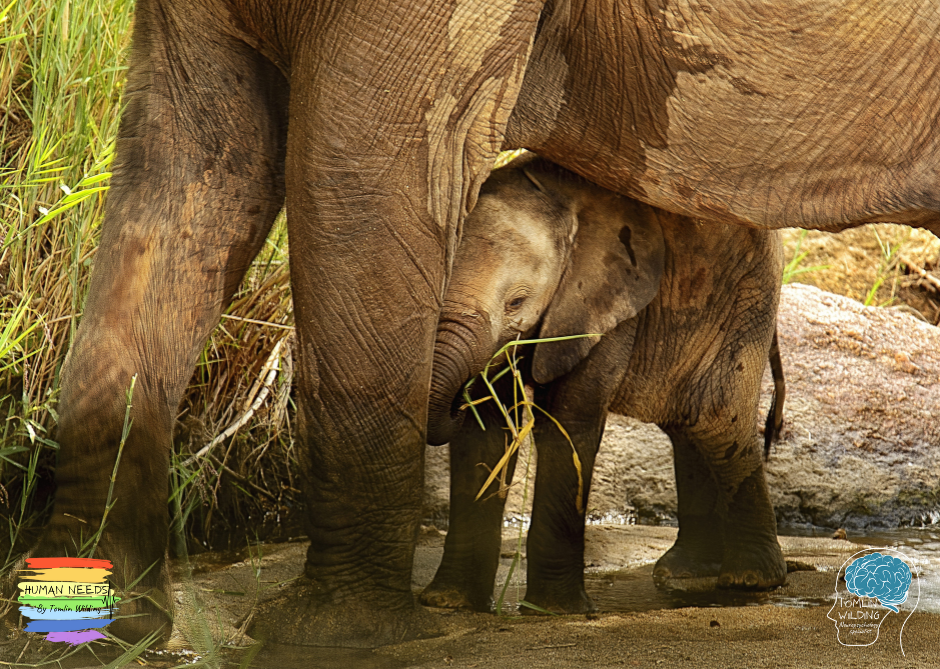Protection need

Protection is the psychological driver that assists us in producing behaviours and working long-term to meet our physical needs and encompasses further our need to protect the human species as a community by successfully raising children. Our fundamental wiring makes us act in many ways that protect the safety and wellbeing of ourselves and our community.
The term protection is used here instead of safety, because our wiring for protection is wider and more complex than our need for safety. The protection need is derived from the human brains’ wiring for survival through the usual means, and through secure attachment. We act in a number of different ways to meet this need, and due to our being a community species, our need for protection includes interaction with other humans.
The neuropsychological need for protection can be broken down into four key areas of protection:
Needing protection and care from others
The need to be protected and cared for by others. In the early days of infancy this is crucial to our very survival and, although it changes as we develop, we still need to experience protection and care from others throughout our lives. We are wired to have a specific role in our community, and this means accepting that others in the community take care of other things. We are protected and able to meet all of our needs by living in communities. We are not a solitary species. We need to feel that those around us have our wellbeing in mind and would “stick up” for us if we were in trouble. This part of the need is closely linked with our need for connection, but is subtly different in that it relates not to the “meaning” within our relationships, but in how well our basic needs are nurtured by others.
People’s actions to meet this need might be:
- Choosing family and friends carefully
- Voting for a government they believe will protect them better
- Joining community groups
- Seeking support or counselling
Some modern examples of this need not being met or being threatened are:
- Our friends or family express views on the Internet that make us feel unsafe
- Our parents forget to pick us up at school
- People don’t consider our dietary or allergy needs or don’t take them seriously
- Someone cuts in front of us on the motorway
Needing to be able to protect and care for ourselves
The need to protect and care for ourselves. As we grow past about 12 months old we begin to learn, slowly, to care for ourselves and meet our own needs. Coupled with our need for autonomy which starts to develop quickly at this age, we are motivated to balance protection from others with self-protection. We seek capability and the skills and tools we need. As we get older and reach adulthood our desire to be more self-sufficient grows and most people choose to “need” others less for our most basic needs, where possible. What this looks like can be very dependent on our personal circumstances, our personality, differences in ability, and our environment. Some people may become very focused on gaining the knowledge and skills to earn enough money to be able to afford what they need, some may be in circumstances in which this is covered by others around them, and they may be focused on their mental wellbeing. Others may focus on accessibility because their physical capabilities do not match well with the way we have set up society. There will also be those who live in circumstances in which they feel that learning physically protect themselves by fighting is the best way to meet their needs, such as in a domestic abuse environment, or in an area effected by war.
People’s actions to meet this need might be:
- Learning to cook and feed yourself
- Keeping yourself healthy and hygienic
- Gaining knowledge and skills to earn a living
- Working to earn money
- The ability to travel to find resources and meet your needs
Some modern examples of this need not being met or being threatened are:
- We feel unable to defend ourselves from attack
- We do not have access or skill to find resources to meet our needs
- We do not have the capability to complete care activities
Needing to protect and care for others
We have a need to care for things outside of ourselves. This stems from our wiring designed to ensure we protect and care or our babies despite them being unusually difficult to care for, and from our survival being dependant on community living. You can read more about this in my article “Why humans are wired for protection“. This strong attachment wiring leads humans to seek to protect others humans all their lives, to become emotionally and sentimentally attached to objects and belongings, and to care for animals of other species. Sometimes aspects of this need can be over-ridden by our upbringing or environment it seems, and its manifestation varies across individual personalities, but it is generally present in humanity universally. Some people are drawn to protecting animals and plants more than other humans.
People’s actions to meet this need might be:
- A deep desire to care for children
- Bringing pets into our homes
- Sticking up for people we care about
- Taking care of older people
- Stepping in to preserve the life of strangers and animals in danger
- Being unable to provide for your family
- Feeling helpless to support or protect a friend at school
- Being unable to have a baby
- Seeing animals in distress
The need for a protected environment
The need to exist in an environment that protects us from danger, and from the elements. Furthermore we need to make this environment suitable and nurturing for our other needs, enabling us to care for ourselves physically, emotionally, cognitively and sensorily. This place needs to securely keep our belongings and tools that we use to meet all our needs, and the needs of those who live with us.
People’s actions to meet this need might be:
- Having a home with enough space to care for the people who live there
- Having appropriate cooking and food storage tools
- Having warmth and access to clean water
- Keeping your home in a way that soothes your mind and senses
- Having security systems for our home
- Having comforting objects and belongings that help us meet our needs
Some modern examples of this need not being met, or being threatened are:
- Home insecurity
- Energy insecurity
- Water insecurity
- Living with extremely noisy neighbours
- Living in a tiny space with a large or neurodivergent family.
Protection associated words
- Care
- Look after
- Safety
- Rescue
- Secure / ity
- Stand up for
- Hide
- Run
- Shelter
- Responsibility
- Home
- Capability
- Trust
- Vulnerability
- Loyalty
- Interdependence
- Justice
- Support
- Solidarity
- Shield
- Sustainability
- Healing
- Advocacy
- Reliance
- Honesty
- Transparency
- Gentle
- Defence
Words related to protection dysregulation
- Hide
- Run
- Fear
- Neglected
- Threatened
- Flee
- Provoked
- Betrayed
- Fawn
- Abused
- Aggression





